Navigating the Early Years: A Symphony of Smooth Transitions
In this edition of the LINC Blog, LINC Graduate Shannon Lewis discusses the the many transitions that children encounter in the early years setting, and how we should “Envision this adventure as a playground, each turn a slide, swing, or hopscotch square, and each step influencing our young explorers’ development and laughter. Transitions aren’t just steps but pivotal moments shaping the melody of a child’s life”.
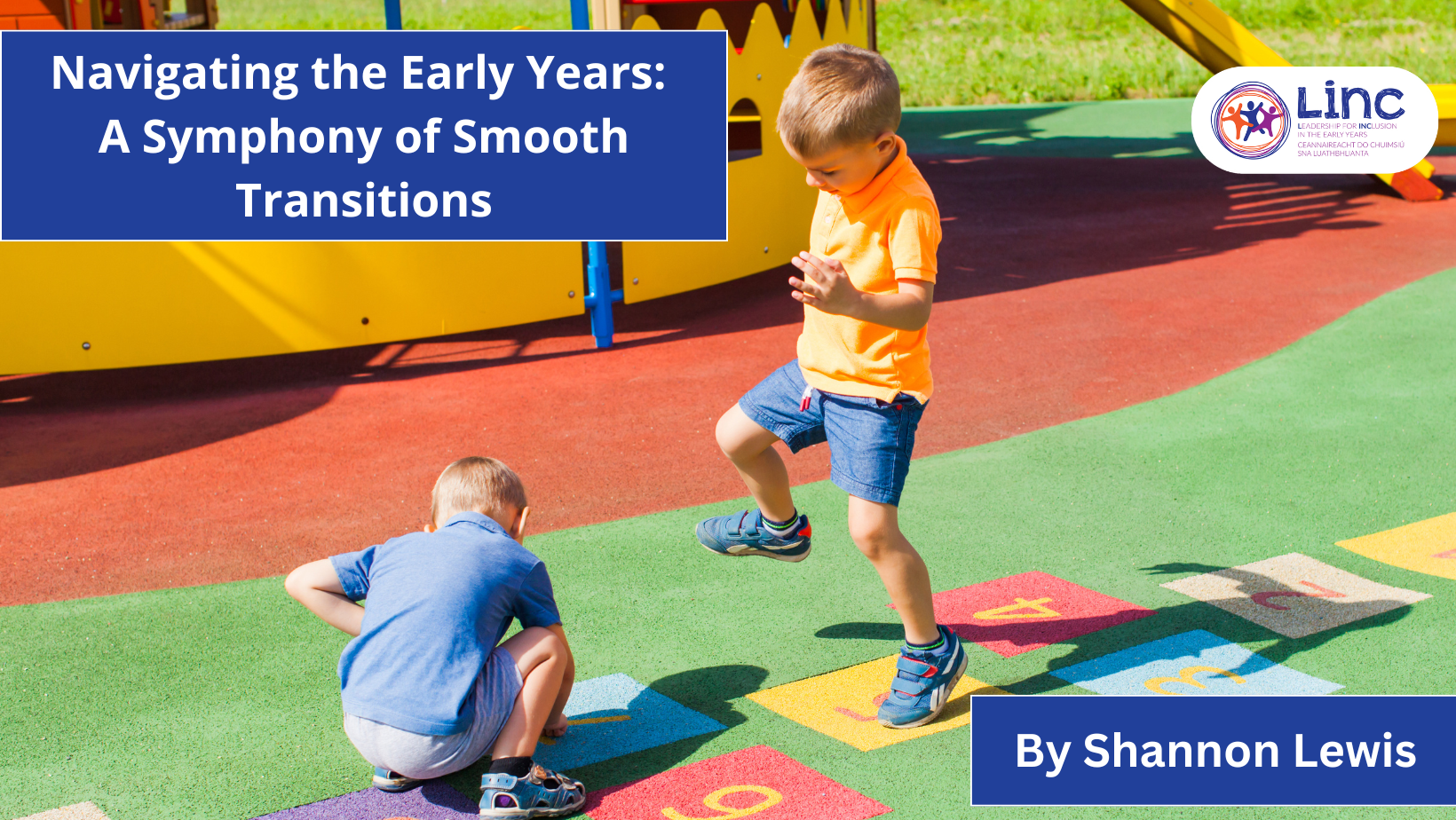
Transitions are the choreography in a child’s whimsical early years dance, guiding them from the familiarity of home to the magical world of early childhood establishments, preschool experiences, and the regular rhythm of the classroom. Envision this adventure as a playground, each turn a slide, swing, or hopscotch square, and each step influencing our young explorers’ development and laughter. Transitions aren’t just steps but pivotal moments shaping the melody of a child’s life.
As an Early Years Educator (EYE), I’ve become the conductor of this symphony, orchestrating smooth transitions to create a harmonious tune of well-being and happiness for every child in my care. Join me on this exploration as we delve into strategies that transform transitions from a simple trip to an exciting journey, promoting happiness and security in the early years setting. These techniques, personally tried and proven in my own classroom, might be the magic notes you need to compose a smooth transition symphony for the children you support.
Transitions are described as a process of adjusting to changes and allowing time for adjustment in Aistear, the Early Childhood Curriculum Framework for children from birth to six years old.1 One of the transformative objectives of the National Policy Framework for Children and Young People: Brighter Outcomes Better Futures2 is the recognition of the significance of assisting transitions. The anxiety and fear of the “unknown” that many children frequently experience can be lessened by offering transitional strategies and activities.3
By providing dependable and stable relationships, continuity of care, and a safe base, practitioners play a critical role in helping children anticipate and manage change.4 When essential individuals in a child’s life communicate with one another and provide crucial information, the child’s experience of changes can be greatly beneficial. Educators must assist children in comprehending routines and provide a consistent, caring explanation of what will happen next.
It is essential that children go through happy, easy transitions, according to Ambitions for Transitions.5 Young children are capable of learning and development and are active agents. The child’s voice must always be meaningfully incorporated and acknowledged.6 Children have the right to have their opinions taken into consideration and respected when making decisions that impact them, according to Article 12 of the United Nations (UN) Convention on the Rights of the Child.7
Transition strategies refer to methods for managing everyday disturbances in environments or schedules. The methods can be communicated orally, aurally, or visually, and they can be applied before, during, or following a transition.8 The techniques are meant to make transitions more predictable and establish healthy habits for children.8 Studies show that up to 25% of a school day is spent on transition activities, such as entering the classroom, leaving the playground, or preparing for mealtimes.8 Transitions can present a challenge for some young children, especially those with additional needs like Autism (ASD) or from diverse backgrounds. Our role as educators is to help alleviate the stress, anxiety, and fear they may feel around these transitions.
The most popular strategy that I find most beneficial is a visual timetable. Children can benefit from visual schedules by seeing what’s coming up, comprehending the order of events, and feeling more predictable overall. Several studies have shown that using visual schedules in conjunction with home and school settings can minimize disruptive behaviours and transition times while enhancing children’s independence.9 It’s crucial to lay out clear guidelines for the kids. Studies have shown that providing a visual cue during a transition might lessen difficult behaviour while raising expectations for subsequent transitions.10 When implementing the visual timetable, I opted to take physical pictures of items that would be in my visual timetable. For example, a picture of our garden represents outdoor play, a picture of beds laid out and dressed represents nap time, and a picture of one of the dinners represents dinner time. This made the timetable realistic and consistent with their environment. The visual timetable supports all children in the room and is an excellent strategy to promote inclusive practices.
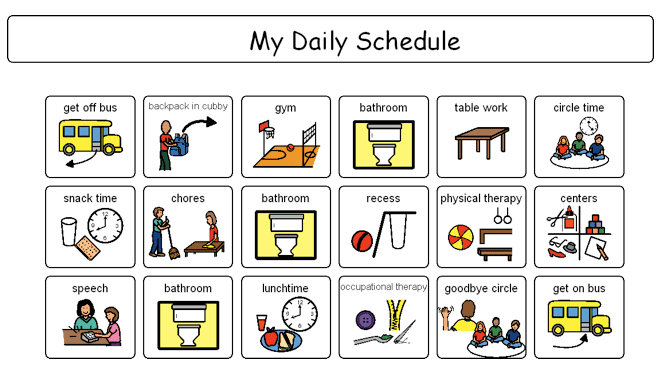
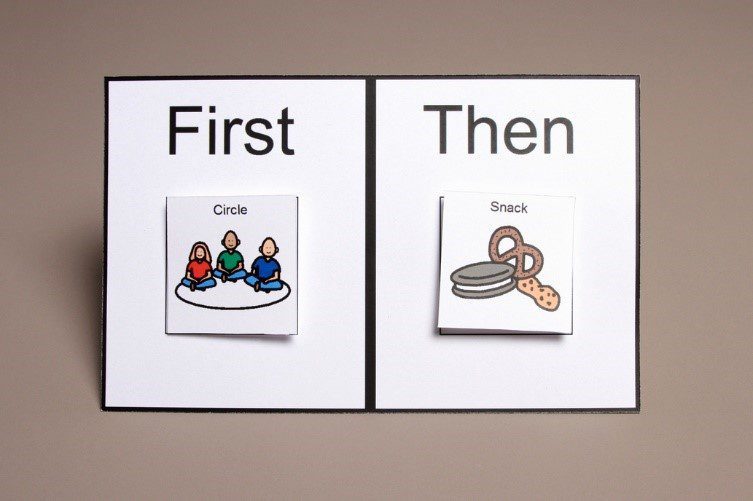
Another strategy that teachers use to help with transitions is the visual timer. Given how abstract the concept of time is, it can occasionally be useful to visually represent it when discussing it to facilitate a transition. You can use a simple sand timer or any of the many more advanced visual timers available, such as visual clocks on phone apps. Giving the children a picture of what will happen next will help eliminate the need for using the word “time”.11 I find the sand timer works best in my room along with a whistle. Visually they can see how long is left, and aurally they hear the whistle when time is up. One quick blow when there is 20-30 seconds left really helps my children stay focused when tidying up after a task.

The significance of sensitively managing transitions, continuity of care, relationships, and experiences for children is emphasized in Standard 13 of Síolta, Transitions.12 It also emphasizes how crucial it is for parents and educators to work in partnership and share information on children’s early development.12 To establish productive channels of communication, educators should be proactive in reaching out to parents. Aistear1 states that parents are the most influential persons in their children’s lives.
I know that parents always like to ask their child how their day went in creche and what they did. Sometimes children can’t answer these questions; they find them difficult, or some children might not have the words. Here’s where having a parent-child partnership is crucial. Something that could help this is a home-school journal, where parents check in with the educator before school and the educator records the child’s day in the diary. Parents and educators can connect, and the child’s history of triggers before starting or ending school is documented in writing so that it can be addressed.13 This is crucial for assisting with transitions. In my setting, we had a communication app where the child’s whole day is documented. This helps immensely in keeping in contact with the parents.
As a final word, remember to take your time, don’t rush the child, provide them with verbal and visual cues to warn them about a transition, and give them plenty of time to assimilate the information before allowing them to make the change when they’re ready.
“The best way to make children good is to make them happy.” – Oscar Wilde
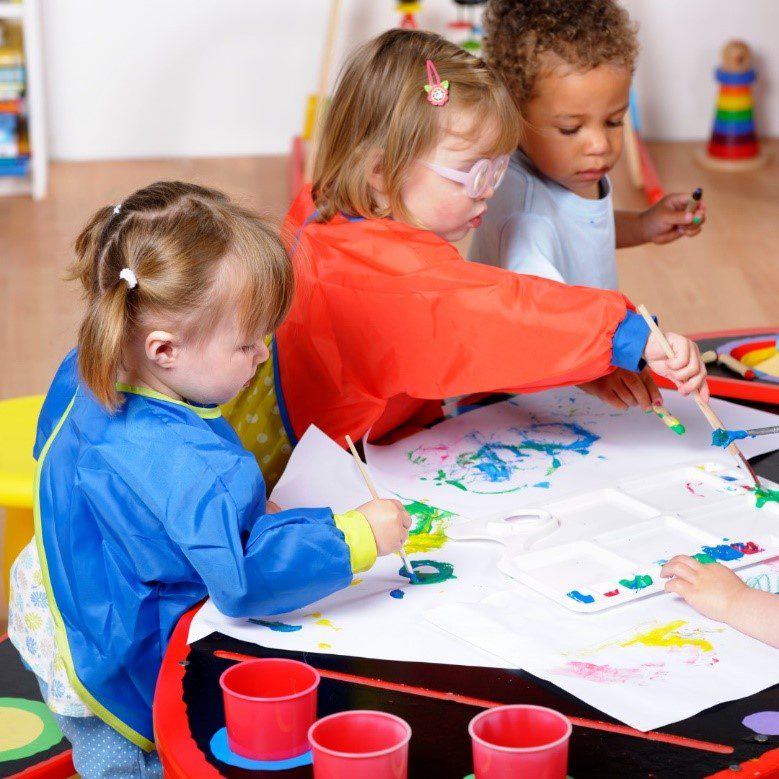
References
- National Council for Curriculum and Assessment (2009). Aistear: The Early Childhood Curriculum Framework. Dublin: The Stationery Office.
- Department of Children and Youth Affairs (2014). Better Outcomes, Brighter Futures: The National Policy Framework for Children and Young People, 2014-2020.
- 2020. Bridge Back to School an Autism-Friendly Learning Resource for Summer 2020. [online] Available at: https://asiam.ie/wp-content/uploads/2020/07/Digital-copy-of-Bridge-back-to-school-3.pdf
- National Council for Curriculum and Assessment (2020). Aistear Siolta Practice Guide: Supporting Transitions. [online] Available at: https://www.aistearsiolta.ie/en/transitions/overview/supporting-transitions.pdf
- Daly, M. (2018) Ambitions for Transitions: A Guide to Support Every Child’s Progression from Early Years Services to Primary School, Limerick: ABC Start Right. Available at: https://www.paulpartnership.ie/wp-content/uploads/2018/03/Transition-Report-ABC-Start-Right-Web-.pdf
- Ring, E. and O’Sullivan, L. (2016). The importance of including the child’s voice in the transition process: Signposts from a national evaluation of concepts of school readiness in Ireland. Children’s Research Digest. 3(2), pp. 37-45. Available at: https://childrensresearchnetwork.org/files/Research-Digest-Vol-3-Issue-2.pdf
- United Nations. (1989) United Nations Convention on the Rights of the Child, Geneva: United Nations General Assembly.
- Hume, K. (2008). Transition Time: Helping Individuals on the Autism Spectrum Move Successfully from One Activity to Another. The Reporter 13(2), 6-10. Available at: https://www.iidc.indiana.edu/irca/articles/transition-time-helping-individuals-on-the-autism-spectrum-move-successfully-from-one-activity-to-another.html
- Dettmer, S., Simpson, R., Myles, B., & Ganz, J. (2000). The use of visual supports to facilitate transitions of students with autism. Focus on Autism and Other Developmental Disabilities, 15, 163-169.
- Schmit, J., Alper, S., Raschke, D., & Ryndak, D. (2000). Effects of using a photographic cueing package during routine school transitions with a child who has autism. Mental Retardation, 38, 131-137.
- Lynch, C., 2019. Smoother Transitions for Children on the Autism Spectrum. [Blog] Psychology Today, Available at: https://www.psychologytoday.com/ie/blog/autism-and-anxiety/201912/smoother-transitions-children-the-autism-spectrum
- Centre for Early Childhood Development and Education (2006) Síolta: The National Quality Framework for Early Childhood Education, Dublin: Centre for Early Childhood Development and Education.
- Middleton Centre for Autism, 2020. Transitions. [online] 2(14). Available at: https://www.middletownautism.com/files/uploads/9f52c165fc598093696b2c0e97d86cb3.pdf]
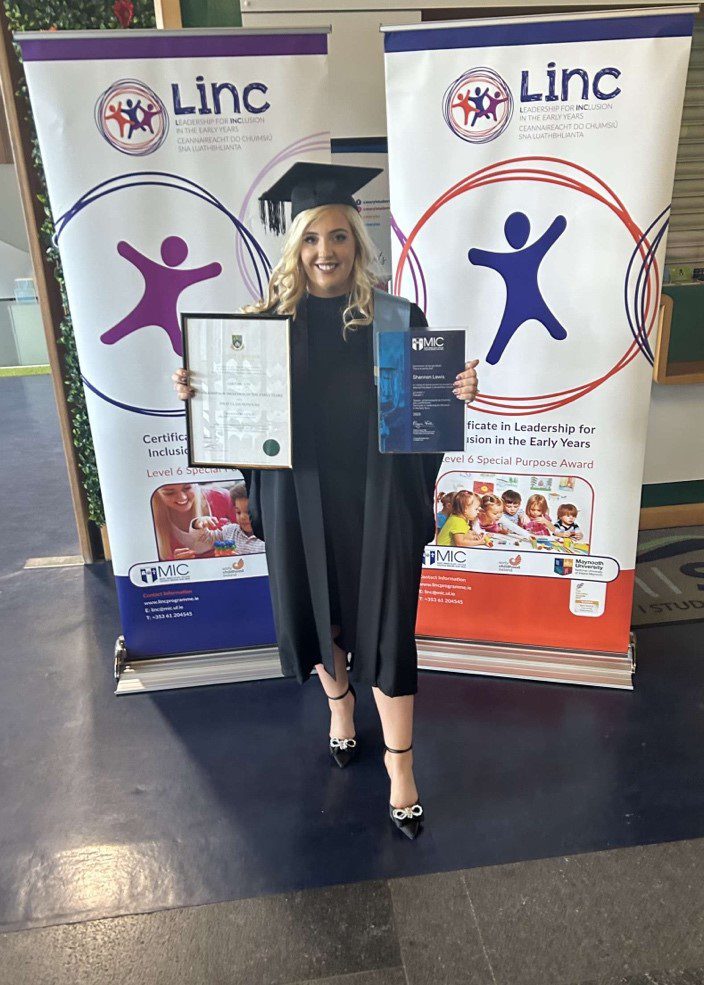
Shannon Lewis
Home Tuition Tutor with the Department of Education
Previous: Room Leader in the Toddler Room at Talltrees Childcare, Co. Limerick.
Shannon completed a BA in Early Childhood Care and Education in Mary Immaculate College in 2021 and then the LINC programme in 2022. Shannon is continuing her learning by engaging in LINC +CPD programme for INCOs. Shannon entered the early years after completing her degree, starting with pre-schoolers aged 3-4 to now working with toddlers, aged 2. Shannon actively supports and promotes the access, inclusion, and participation of all children in ECCE settings. Shannon has lots of experience working with children with additional needs particularly ASD.
After two years in the EYS, Shannon is now working full time as a Home Tuition tutor with young children with ASD. Shannon works alongside parents and their child’s multi-disciplinary teams implementing their individual education plans (IEP’s) and reaching their development targets. Shannon is looking forward to continuing her studies as she prepares to begin her Masters in Primary Education.
You may also like:
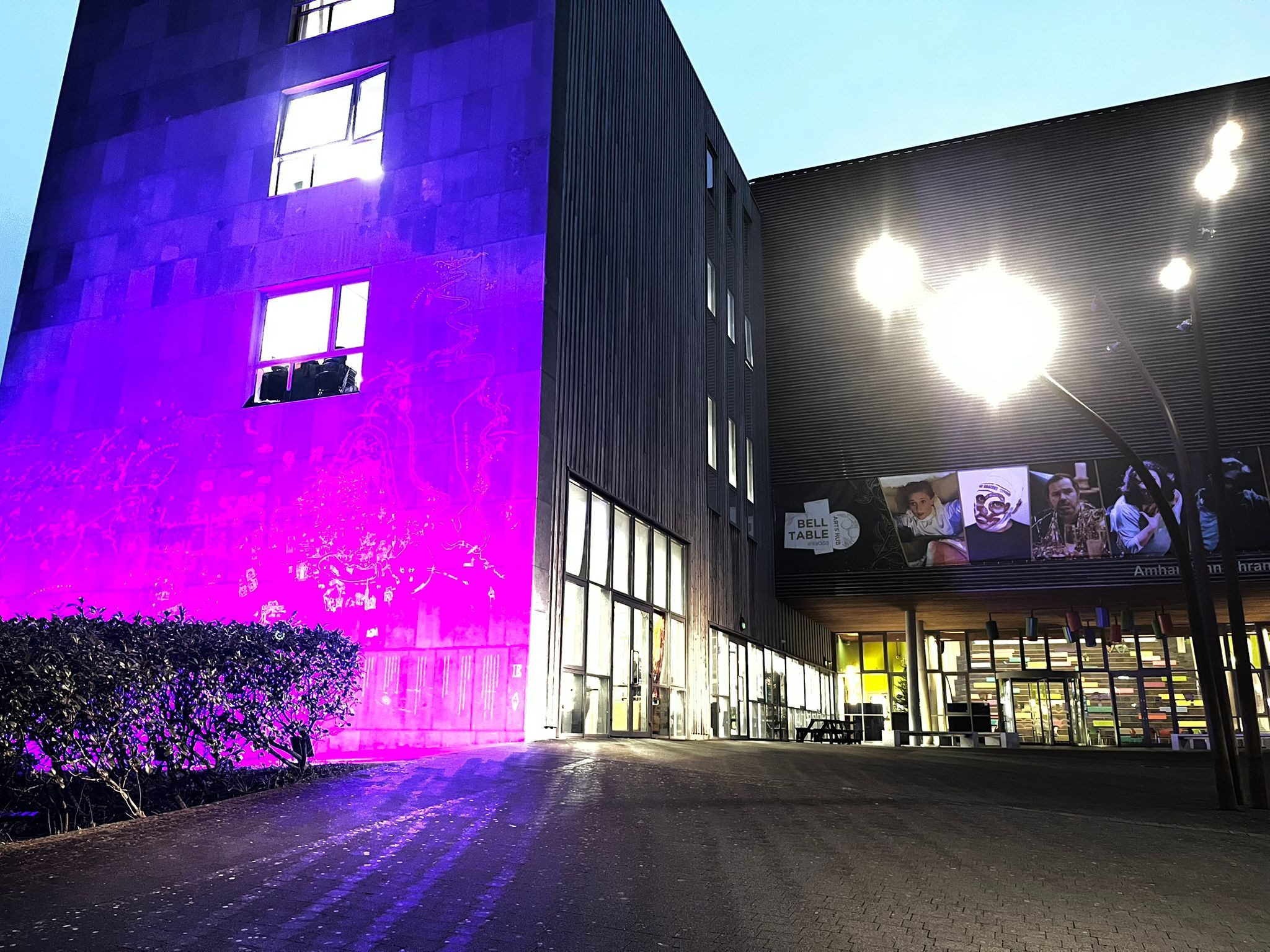
LINC Shines a Light on Inclusion for the International Day of Persons with Disabilities 2025
LINC Shines a Light on Inclusion for the International Day of Persons with Disabilities 2025 The Leadership for INClusion in the Early Years (LINC) Programme marked the United Nations International Day of Persons with Disabilities (IDPD) this evening by illuminating...
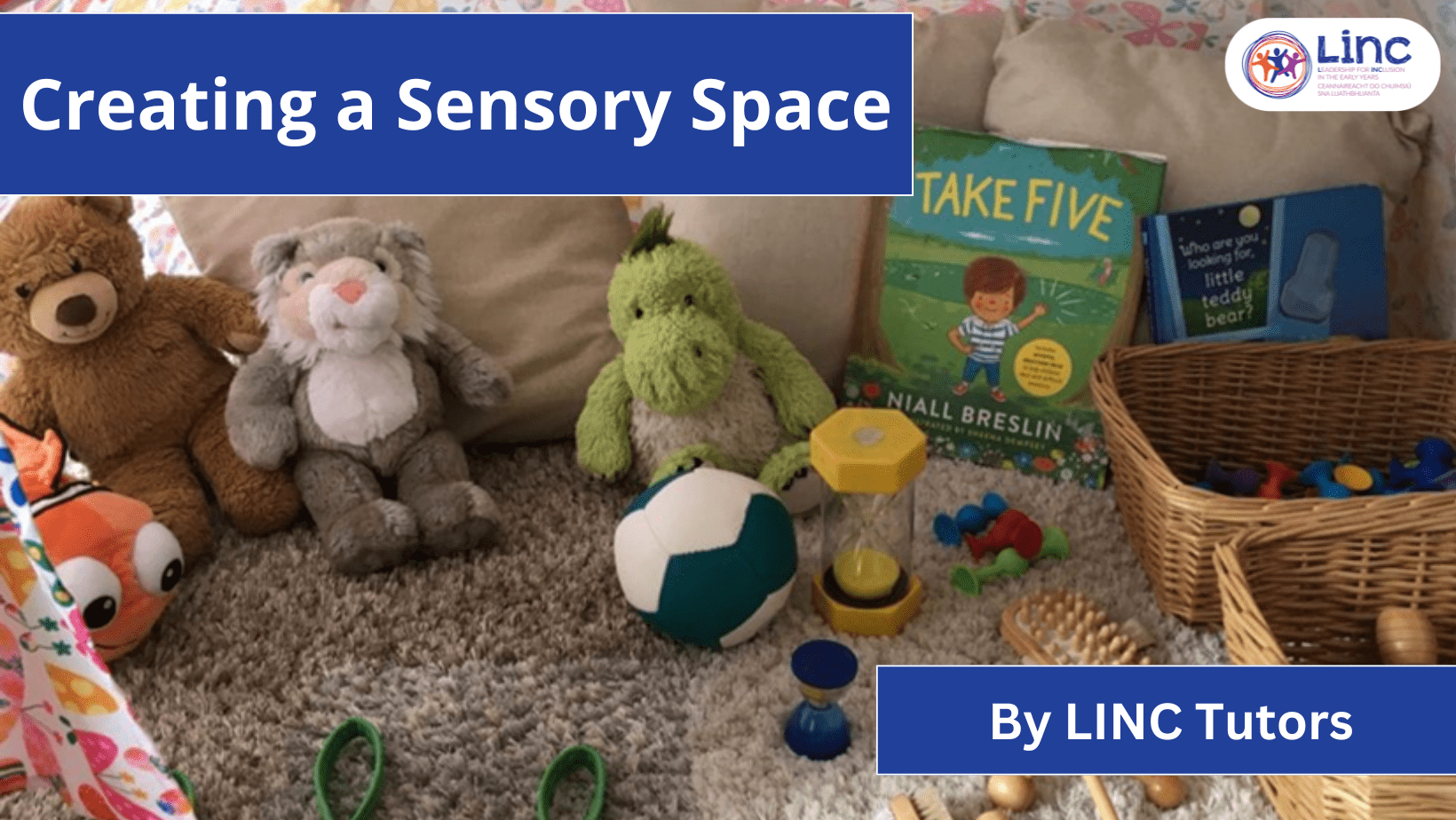
Creating a Sensory Space
Creating a Sensory Space In this edition of the LINC blog, Claire Butterly, Karina Abbott, Ann Donnellan, Carole Dee, Linda Madden, Margaret Joyce and Paula Harte highlight some considerations when planning a sensory space in your Early Learning and Care setting....
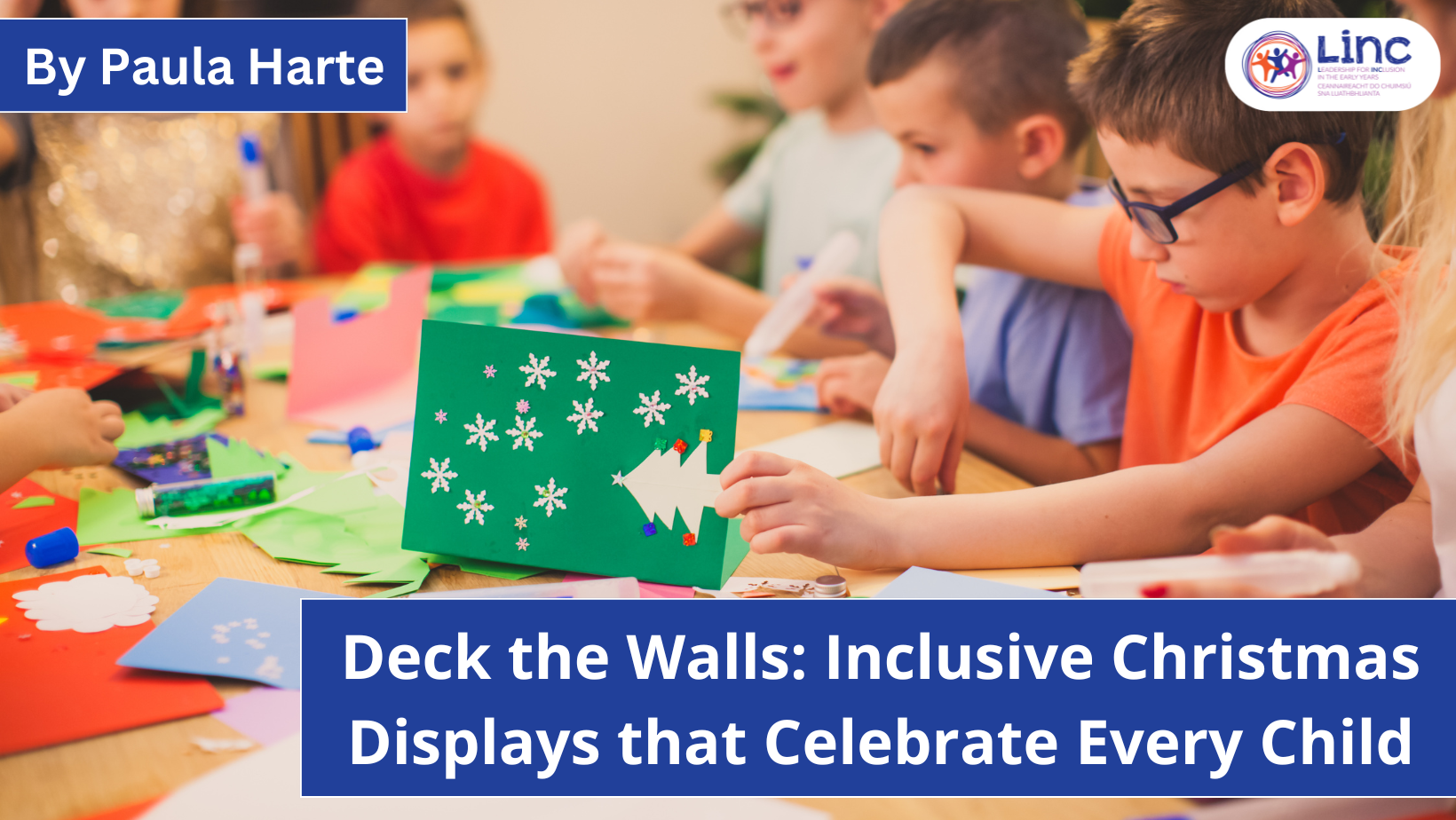
Deck the Walls: Inclusive Christmas Displays that Celebrate Every Child
Deck the Walls: Inclusive Christmas Displays that Celebrate Every Child In this edition of the LINC Blog, former LINC Tutor Paula Harte explores how Christmas displays can bring warmth, creativity, and connection to Early Learning and Care (ELC) and School-Aged...
